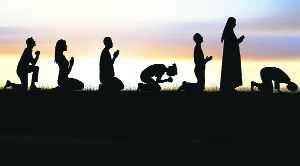BY Satya Prakash
Seventy years after the people of India gave to themselves a Constitution guaranteeing certain additional fundamental rights to religious and linguistic minorities, the nation is struggling to know who can be termed as a “minority”.
Articles 29 and 30 of the Constitution talk about protection of interests of minorities and their fundamental right to minorities to establish and administer educational institutions.
But surprisingly, the term “minority” has not been defined under the Constitution, leading to confusion as to who all are entitled to reap the benefits meant for minorities under the Constitution and various schemes, policies and programs of central and state governments.
Parliament had an occasion to consider the issue when it enacted the National Commission for Minorities Act, 1992 but it chose not to define the term.
Section 2(iii) of the Act simply says, “Minority”, for the purposes of this Act, means a community notified as such by the Central Government. It doesn’t prescribe any criteria, whatsoever, for the purpose, leaving it to the discretion of the government.
Again, when the Centre issues a notification on October 23, 1993 it simply declared Muslims, Christians, Sikhs, Parsis and Buddhists as minorities. Jains were added to the list in 2014, based on their demographic numbers.
On the face of it, the issue appears to be very simple. Since Muslims, Christians, Sikhs, Parsis, Buddhists and Jains are numerically inferior in their strength, they must be declared “minorities”. But it’s not that simple.
What about the states where Hindus are in minority? Can Muslims in Jammu and Kashmir or Lakshdweep be treated as a “minority”? Similarly, can Christians be treated as a “minority” in northeastern states such as Mizoram, Meghalaya, and Nagaland? Can Sikhs be treated as a “minority” in Punjab? What about a situation when no religious group in a state forms more than 50 per cent of the population? There are many more such questions begging for answers.
It was precisely for these reasons that the Supreme Court last month asked the NCM to take a decision in three months on a representation seeking guidelines for defining “minority”.
The NCM had set up a committee to examine the issue but the report had not been made public. But it any case, the final decision on the issue has to be taken by the central government in terms of Section 2(iii) of the NCM Act, 1992.
According to the UN, a “minority” is “A group numerically inferior to the rest of the population of a State, in a non-dominant position, whose members —being nationals of the State — possess ethnic, religious or linguistic characteristics differing from those of the rest of the population and show, if only implicitly, a sense of solidarity, directed towards preserving their culture, traditions, religion or language.”
In next few decades India will have a unique demography. It will have the largest Hindu, Muslim and Sikh populations in the world.
The real question is what should be the criteria? Should there be a threshold in terms of percentage of population or absolute number beyond which a religious community can’t be treated as a “minority”?
Should that threshold be 10 per cent of the total population of 20 per cent? Or, should it be 50 million or 100 million? Unless that threshold is determined in the context of the UN prescribed criteria, including the non-dominant position, the current confusion on the contentious issue would continue.
Unlock Exclusive Insights with The Tribune Premium
Take your experience further with Premium access.
Thought-provoking Opinions, Expert Analysis, In-depth Insights and other Member Only Benefits
Already a Member? Sign In Now










